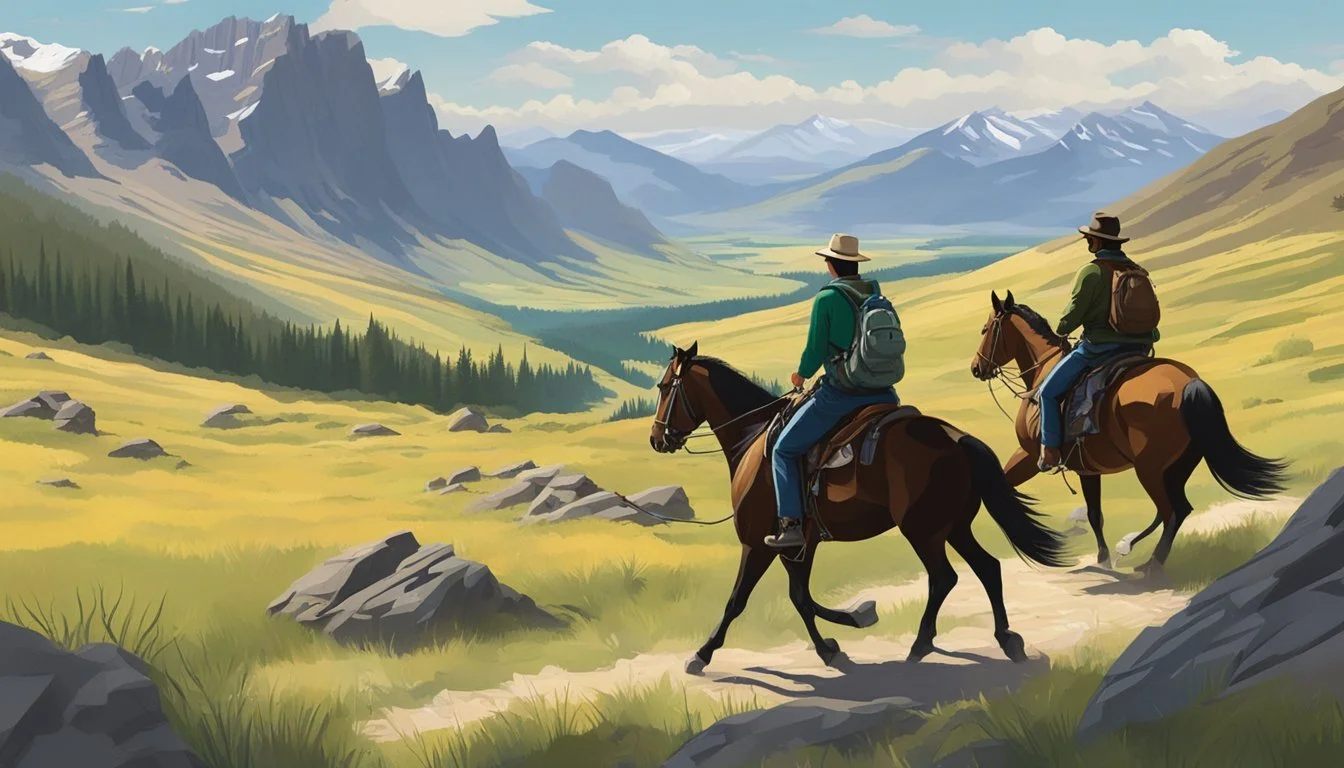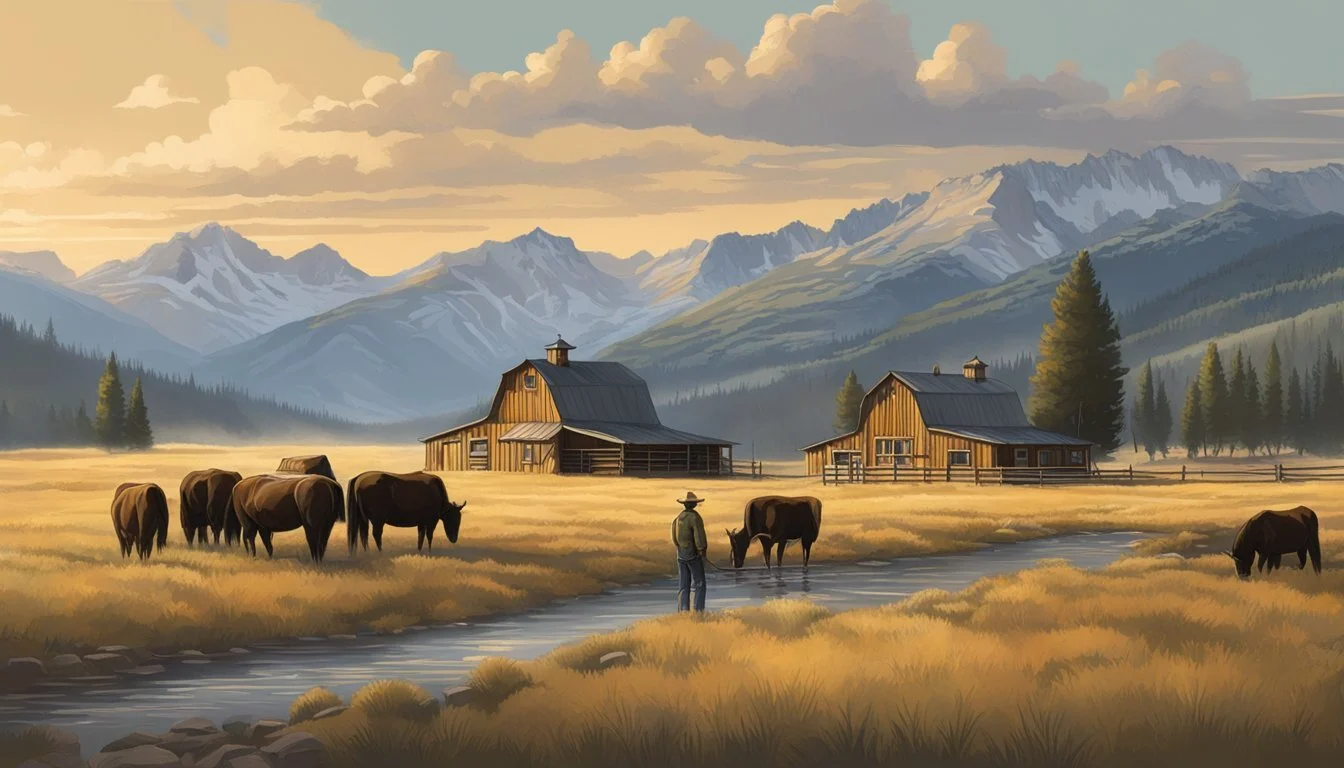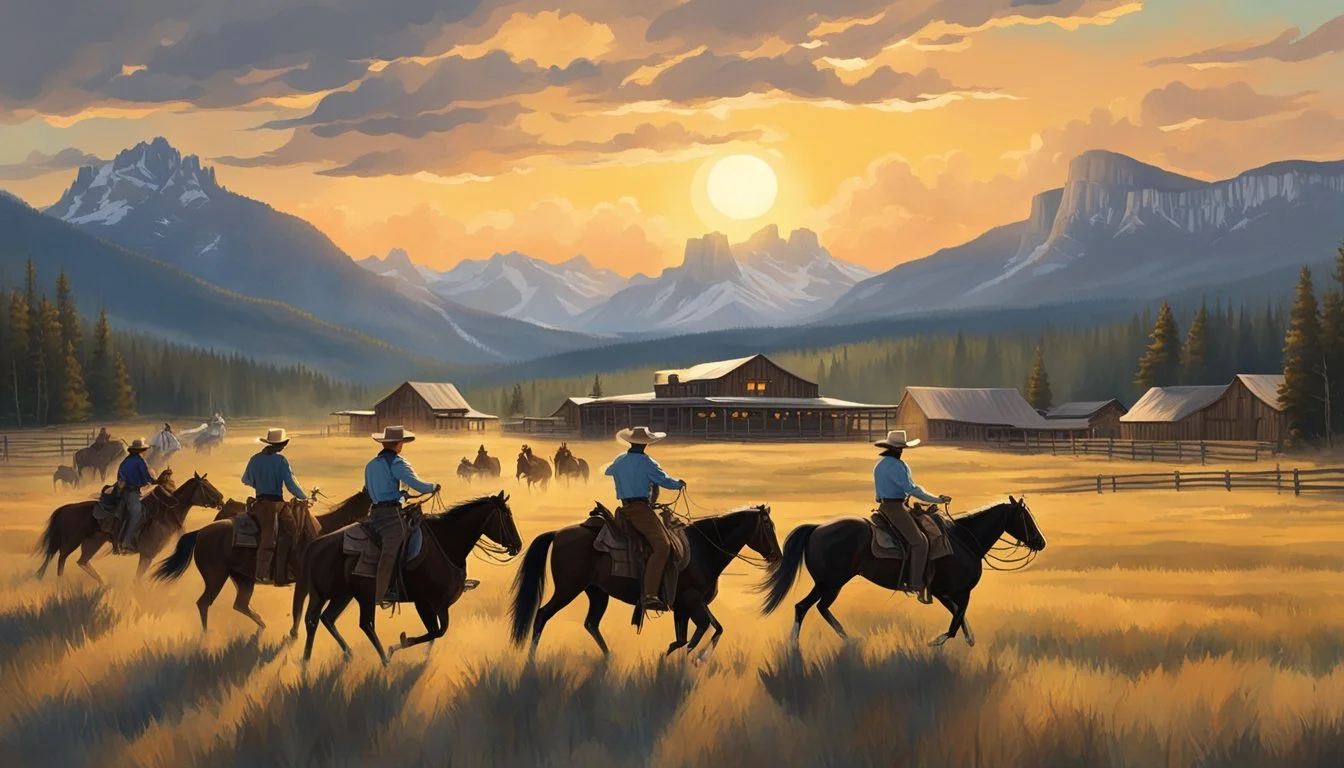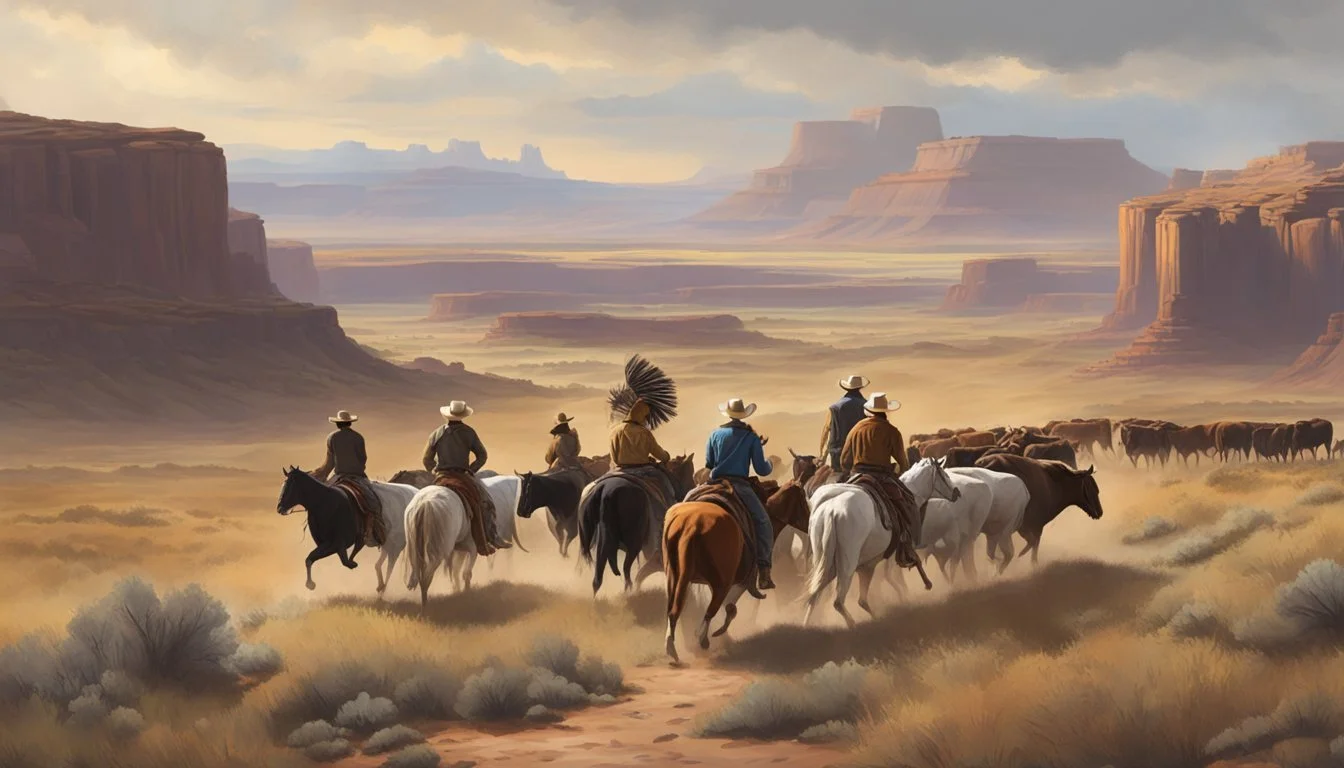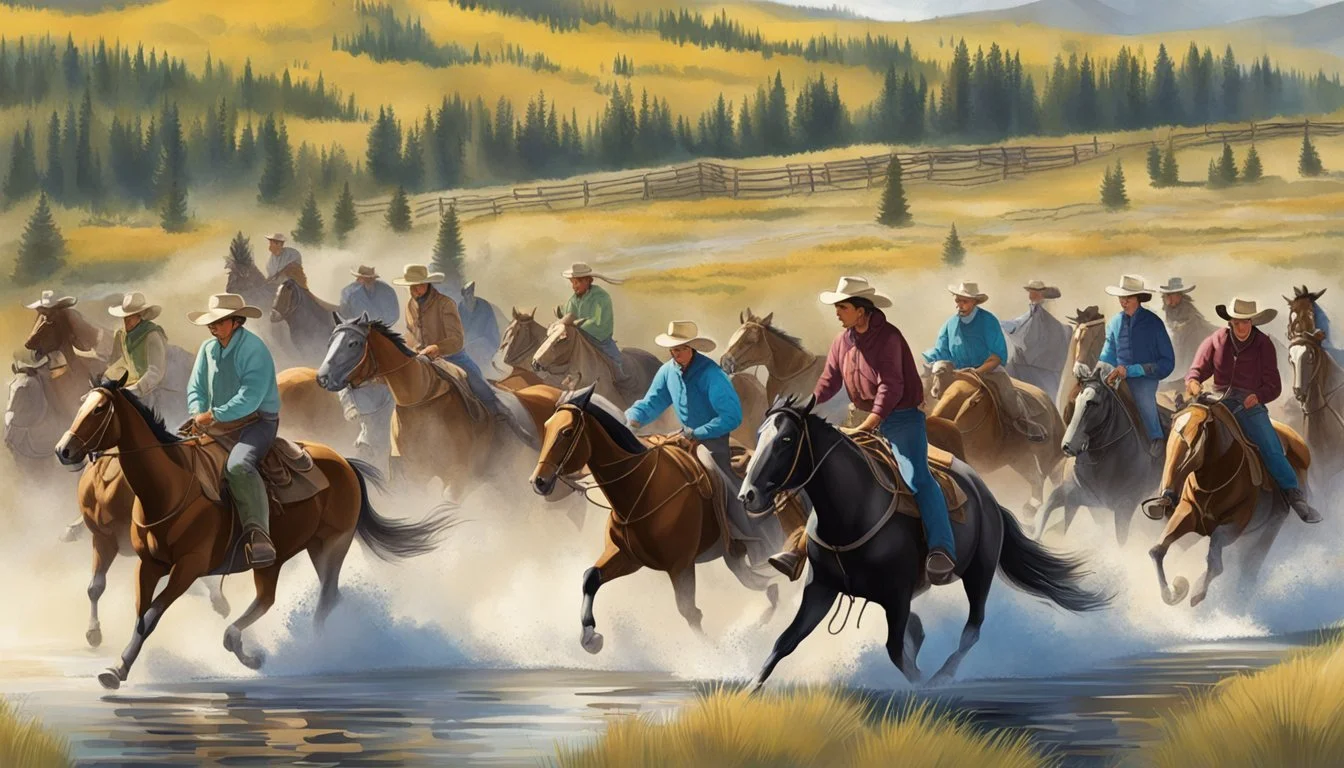Discover the Truth Behind Yellowstone Is It a Real Ranch or Just Fiction?
Yellowstone captivates viewers with its stunning Montana landscapes and dramatic ranching saga. Many fans wonder if the sprawling Dutton Ranch featured in the show actually exists. While the Yellowstone Dutton Ranch is fictional, the series is filmed at a real working cattle ranch in Montana called the Chief Joseph Ranch.
The 2,500-acre Chief Joseph Ranch in Darby, Montana serves as the primary filming location for Yellowstone. This historic property with its iconic log house and mountain vistas provides the perfect backdrop for the Dutton family's ranching empire. Though smaller than the massive ranch portrayed in the show, the Chief Joseph Ranch offers authentic Western scenery.
Yellowstone's creators blend real Montana locations with fictional elements to craft the world of the series. While the Dutton Ranch may be imaginary, the show captures the essence of Montana ranching culture. Scenes featuring Kevin Costner as patriarch John Dutton showcase both the beauty and challenges of running a vast cattle operation in the modern American West.
Yellowstone Series Overview
"Yellowstone" is a gripping television drama that explores power, family, and the American West. The show offers a compelling mix of high-stakes conflicts and stunning Montana landscapes.
Plot and Themes
"Yellowstone" centers on the Dutton family, led by patriarch John Dutton, as they fight to maintain control of their vast ranch. The series delves into themes of legacy, land rights, and the changing face of the American frontier. Family drama takes center stage, with internal conflicts often rivaling external threats.
The show examines the clash between traditional ranching culture and modern development pressures. Political intrigue and power struggles feature prominently, as the Duttons navigate complex relationships with local tribes, land developers, and government officials.
Main Cast and Characters
Kevin Costner stars as John Dutton, the tough and determined ranch owner. His children include Beth (Kelly Reilly), a sharp-tongued businesswoman; Jamie (Wes Bentley), a lawyer with conflicted loyalties; and Kayce (Luke Grimes), a former Navy SEAL.
Other key characters include Rip Wheeler (Cole Hauser), the loyal ranch foreman, and Monica Dutton (Kelsey Asbille), Kayce's wife from the nearby reservation. The ensemble cast brings depth to the complex web of relationships and conflicts that drive the series.
Reception and Impact
"Yellowstone" has garnered critical acclaim and a devoted fanbase since its 2018 premiere. The show's popularity has led to multiple spinoffs, including the prequel series "1883" which explores the Dutton family's 19th-century origins.
The series has reignited interest in Western-themed entertainment and showcased Montana's natural beauty. It has also sparked discussions about land use, Native American rights, and the changing nature of the American West.
"Yellowstone" creator Taylor Sheridan's distinct storytelling style has been praised for its authenticity and nuanced portrayal of modern cowboy culture. The show's success has solidified its place as a significant cultural phenomenon in contemporary television.
Historical and Geographical Setting
The Yellowstone Dutton Ranch draws inspiration from Montana's rich ranching heritage and stunning natural landscapes. Its real-world counterpart, Chief Joseph Ranch, is steeped in history and situated in a breathtaking geographical setting.
Significance of Montana
Montana's vast prairies and rugged mountains provide the perfect backdrop for large-scale ranching operations. The state's cattle industry dates back to the 1860s, when early settlers recognized its potential for livestock grazing. Montana's harsh winters and dry summers shaped a resilient ranching culture that persists today.
Ranches like the fictional Dutton property and the real Chief Joseph Ranch represent Montana's enduring agricultural traditions. These expansive properties often span thousands of acres, supporting cattle herds and preserving open spaces. Montana's ranches also play a crucial role in wildlife conservation, maintaining habitats for diverse species.
Chief Joseph Ranch History
Chief Joseph Ranch, located in Darby, Montana, serves as the real-life filming location for the Yellowstone Dutton Ranch. The property's name honors Chief Joseph of the Nez Perce Tribe, who led his people through the area during the Nez Perce War of 1877.
Built in 1914, the ranch's main lodge showcases classic Western architecture. Glass tycoon William Ford originally constructed the property as a summer home. Over the years, it changed hands several times before becoming a working cattle ranch.
Today, the 2,500-acre Chief Joseph Ranch balances its role as a filming location with ongoing cattle operations. When not being used for Yellowstone production, the ranch welcomes guests for lodging and tours.
Bitterroot Valley and its Natural Landscape
Chief Joseph Ranch sits in Montana's picturesque Bitterroot Valley, about 65 miles south of Missoula. This 96-mile-long valley is known for its stunning beauty and diverse ecosystems.
The Bitterroot Mountains form the valley's western border, while the Sapphire Mountains rise to the east. The Bitterroot River flows through the center, supporting lush riparian habitats. Ponderosa pine forests and grasslands cover the surrounding hills.
This varied landscape provides ideal conditions for ranching, agriculture, and wildlife. The valley's natural beauty and outdoor recreation opportunities have also made it a popular destination for tourists and new residents, leading to some tension between long-time ranchers and newcomers.
Real Ranch Versus Fiction
Yellowstone portrays a romanticized version of ranch life that blends reality with dramatic embellishment. The show draws inspiration from genuine ranching practices while taking creative liberties for storytelling purposes.
Authenticity in Depiction
Yellowstone captures some authentic aspects of modern ranching. The series showcases real cattle handling techniques, branding rituals, and the use of horses for herding. Ranch hands perform tasks like mending fences and tending to livestock, reflecting actual duties on working ranches.
However, the show exaggerates certain elements for dramatic effect. The Yellowstone Dutton Ranch employs an unrealistically large number of ranch hands compared to typical operations. The frequent violent conflicts and political power struggles are also heightened for television.
Comparisons with Historical Ranches
The fictional Yellowstone Ranch draws parallels to historic cattle empires of the American West. Ranches like the XIT in Texas and the King Ranch spanned vast territories, similar to the Duttons' expansive property.
Notable historical figures like William Ford and Howard Clark Hollister owned substantial ranches in Montana during the late 19th and early 20th centuries. These ranchers faced challenges protecting their land from encroachment, a theme echoed in Yellowstone's storylines.
The show's portrayal of conflicts with Native American tribes and government entities reflects historical tensions, though often in a simplified or dramatized manner.
Working Ranch Insights
Real Montana ranchers have noted both accuracies and inaccuracies in Yellowstone's depiction of ranch life. The show correctly portrays the demanding nature of ranch work and the close-knit community among workers.
Actual ranches like the Shelton Ranch in Montana operate on a much smaller scale than the fictional Yellowstone. They typically employ fewer hands and focus more on day-to-day operations rather than grand political schemes.
The series glosses over many mundane aspects of ranching, such as detailed financial management and the challenges of sustainable land use. It also minimizes the impact of modern technology and regulations on contemporary ranching practices.
Filming Locations and Set Design
Yellowstone's stunning visuals come from carefully chosen filming locations and meticulously crafted set designs. The show's creators blend authentic Western architecture with functional television production needs to create a believable ranching world.
Chief Joseph Ranch as Dutton Family Home
The iconic Dutton family ranch is filmed at the real-life Chief Joseph Ranch in Darby, Montana. This 2,500-acre working cattle ranch serves as the primary exterior filming location for Yellowstone. The ranch's picturesque log mansion, built in 1917, doubles as the Dutton family home.
When not used for filming, Chief Joseph Ranch operates as a guest ranch. Visitors can stay in cabins on the property, enjoying activities like fishing and horseback riding. The ranch's owners received an unexpected call from Yellowstone producers, turning their historic property into a central filming location.
Adaptation for Television
While Chief Joseph Ranch provides authentic exteriors, interior scenes are often filmed on sound stages. Set designers carefully recreate the ranch's interiors, ensuring consistency with exterior shots. They incorporate period-appropriate details and materials to maintain the rustic Western atmosphere.
The production team adapts real ranch structures for filming needs. Barns, stables, and outbuildings are modified to accommodate camera equipment and crew. Lighting rigs and other production necessities are cleverly hidden to preserve the illusion of a working ranch.
Local Architecture Influence
Yellowstone's set design draws inspiration from local Montana architecture. The show's creators studied regional building styles to ensure authenticity. Log construction, stone fireplaces, and large windows that frame mountain views are prominent features.
The production also utilizes other Montana locations. Shelton Ranch near Darby provides additional terrain for diverse scenes. Local lodges and cabins occasionally serve as settings for meetings or confrontations away from the main ranch.
Paramount Network and the show's designers work closely with architectural experts to capture the essence of Western ranch life. This attention to detail in both locations and set design contributes significantly to Yellowstone's immersive viewing experience.
Cultural and Social Elements
Yellowstone intertwines authentic cultural elements with the fictional Dutton Ranch storyline. The show explores complex relationships between ranchers, indigenous tribes, and the land they share.
Indigenous Tribes Representation
The series portrays the Broken Rock Reservation and its inhabitants, drawing inspiration from real Native American tribes in Montana. Characters like Chief Thomas Rainwater represent indigenous leaders fighting to reclaim ancestral lands.
The show touches on historical conflicts between settlers and tribes like the Crow and Salish. It highlights ongoing struggles for land rights and cultural preservation.
Yellowstone includes scenes of traditional ceremonies and practices, offering viewers glimpses into Native American culture. The series also addresses contemporary issues facing indigenous communities, such as economic development and tribal sovereignty.
Historical References Integration
Yellowstone weaves in historical references to ground its fictional narrative. The show mentions the Lewis and Clark expedition, acknowledging their impact on the region's exploration and settlement.
Characters often discuss the area's rich ranching heritage, referencing real events and figures from Montana's past. The Dutton family's multi-generational presence on the land mirrors actual long-standing ranching dynasties.
The series incorporates authentic cowboy culture, showcasing traditional skills like roping and horse training. It depicts how these practices have evolved while remaining central to modern ranch operations.
Environmental Messaging
Yellowstone uses its stunning backdrop of the Sapphire and Bitterroot Mountains to emphasize environmental themes. The show explores conflicts between land preservation and development interests.
Characters debate issues like water rights, wildlife conservation, and responsible land use. The series highlights the delicate balance between ranching operations and protecting natural resources.
Yellowstone portrays the impact of climate change on ranching and local ecosystems. It shows characters grappling with drought, wildfires, and changing weather patterns that affect their livelihoods.
The show also touches on sustainable ranching practices and efforts to maintain biodiversity. It illustrates the complex relationship between ranchers and the land they both work and aim to protect.
Guest Ranch Experience
The Chief Joseph Ranch offers visitors a chance to experience the authentic Western lifestyle depicted in Yellowstone. Guests can immerse themselves in ranch activities, explore the scenic Bitterroot Valley, and stay in cabins featured on the show.
Current Use of Chief Joseph Ranch
The Chief Joseph Ranch operates as both a working cattle ranch and a guest ranch. When not used for filming Yellowstone, the property welcomes visitors seeking a taste of Montana ranch life. The Libel family, who own the ranch, manage day-to-day operations and host guests during non-filming periods.
Visitors can tour the ranch grounds and see iconic filming locations from the show. Ranch hands demonstrate cattle work and horse training techniques. Guests may even participate in some ranching activities, gaining hands-on experience with the cowboy way of life.
Vacation Activities in the Valley
The Bitterroot Valley provides a wealth of outdoor recreation opportunities for ranch guests. Fly fishing is popular on the nearby Bitterroot River, known for its trout populations. Hiking and horseback riding trails wind through the surrounding mountains and forests.
In winter, visitors can enjoy cross-country skiing and snowshoeing on the ranch property. The nearby Lost Trail Powder Mountain ski resort offers downhill skiing and snowboarding. Wildlife viewing is excellent year-round, with opportunities to spot elk, deer, and various bird species.
Hospitality and Accommodations
The ranch offers two historic guest cabins for overnight stays. The Lee Dutton cabin and Rip Wheeler cabin can each sleep up to eight people. Both feature rustic decor and modern amenities, blending Old West charm with comfort.
Rates range from $1,400 to $1,700 per night, depending on the season and cabin. Meals are not included, but the fully equipped kitchens allow guests to prepare their own food. The cabins provide a unique opportunity to stay in actual Yellowstone filming locations.
Larger groups can rent the entire Fisherman Cabin for $1,200 per night, with a $50 fee for each additional guest. This option is ideal for family gatherings or friends traveling together.
Behind the Series Production
The production of Yellowstone involves complex logistics and stunning filming locations. Careful coordination between filmmakers and ranch operations brings authenticity to the show's visuals.
Production Challenges and Achievements
Filming Yellowstone presents unique challenges. The production team integrates shooting with ongoing ranch activities, requiring meticulous planning. Real ranch hands and livestock often appear in scenes, enhancing realism.
Weather conditions in Montana can be unpredictable, impacting schedules. The crew must adapt quickly to changing environments while maintaining continuity.
Yellowstone's attention to detail in depicting ranch life is noteworthy. Costume designers and set decorators work tirelessly to create an authentic atmosphere. This dedication has earned praise from real ranchers for the show's accuracy.
Key Production Locations
The Chief Joseph Ranch in Darby, Montana serves as the primary filming location for the Dutton family's ranch. Its 2,500 acres provide a picturesque backdrop for the series.
Other Montana locations include Missoula and Helena, which offer diverse landscapes for different scenes. The production has also utilized areas in Utah such as Park City, Ogden, and Spanish Fork.
The Ben Cook Cabin and Ford-Hollister Lodge have featured in the show, adding to its rustic ambiance. These locations help create the immersive world of Yellowstone, allowing viewers to experience the beauty of the American West.
Yellowstone Ranch's Livestock and Agriculture
The Yellowstone Ranch, as depicted in the popular TV series, showcases a blend of traditional and modern agricultural practices. Its livestock operations and farming techniques reflect the challenges and opportunities faced by real ranches in the region.
Cattle Breeding and Management
The Dutton Ranch primarily focuses on cattle ranching. They raise a mix of breeds, including Holsteins, known for their high milk production. The ranch employs strategic breeding programs to improve herd genetics and produce high-quality beef cattle.
James and Margaret Dutton, the ranch's founders, established the initial herd. Their descendants, including Lee Dutton, continued to expand and refine the cattle operations. Rip Wheeler, the ranch foreman, oversees daily management of the herd.
The ranch uses a combination of traditional and modern techniques for cattle handling. This includes rotational grazing to maintain pasture health and prevent overgrazing.
Farming Techniques
Yellowstone Ranch employs diverse farming techniques to support its livestock operations and generate additional income. The ranch produces hay and other forage crops to feed their cattle during winter months.
Some areas of the ranch utilize precision agriculture methods. These include:
Soil sensors for optimal irrigation
Satellite imagery for crop health monitoring
GPS-guided machinery for efficient planting and harvesting
Beth Dutton, known for her business acumen, has been instrumental in modernizing the ranch's agricultural practices. Her efforts aim to increase efficiency and profitability while maintaining the ranch's traditional character.
Sustainability and Land Stewardship
The Dutton family prioritizes sustainable land management to preserve their property for future generations. They implement water conservation measures, crucial in the arid Montana climate.
Key sustainability practices include:
Rotational grazing to prevent soil erosion
Buffer zones along waterways to protect water quality
Wildlife corridors to maintain biodiversity
The ranch balances cattle production with environmental conservation. This approach reflects real-world efforts by ranches in the Yellowstone area to coexist with the region's unique ecosystem.
Rip Wheeler and the ranch hands play a vital role in executing these sustainability practices. Their daily work ensures the ranch operates in harmony with the surrounding landscape.
Series Impact and Spin-Offs
"Yellowstone" has sparked a cultural phenomenon, inspiring multiple spin-off series that expand the Dutton family saga across different time periods. These new shows have captivated audiences and further cemented the franchise's popularity.
Spin-Off Series and Expanding Universe
Taylor Sheridan, the creator of "Yellowstone," has developed several spin-off series to broaden the show's universe. "1883" serves as a prequel, depicting the Dutton family's journey to Montana in the late 19th century.
"1923" bridges the gap between "1883" and "Yellowstone," focusing on the Duttons during Prohibition and the Great Depression. This multi-generational approach gives viewers a comprehensive look at the family's history over more than a century.
Another planned spin-off, "6666," will explore modern-day ranching at the real-life Four Sixes Ranch in Texas. This series aims to provide an authentic perspective on contemporary cowboy life and ranch operations.
Fan Base and Community
"Yellowstone" has cultivated a dedicated fan base, drawing millions of viewers to the Paramount Network. The show's success has revitalized interest in Western dramas and ranch life.
Fans eagerly discuss plot developments, character arcs, and the historical context of the Dutton family saga. Online communities and social media platforms buzz with theories and discussions about the show and its spin-offs.
The franchise's expansion has allowed fans to engage with the "Yellowstone" universe year-round, maintaining interest between seasons of the main series. This continuous engagement has helped solidify the show's place in popular culture.



